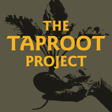
Restoring Midwest Prairies and Reviving Indigenous Traditions
The prairie was once one of the largest and most ecologically complex ecosystems in the world. Today, most of that prairie has been replaced for farmland. Kate explores how the prairie is, and can be, part of our agricultural world through conversations with people who are restoring prairies in the Upper Midwest and advocating for the return of the prairie’s most important and iconic resident: the American Buffalo.
The Taproot Project is an initiative of the Midwest Transition to Organic Partnership Program, a project funded by the USDA National Organic Program to support transitioning and organic producers with mentorship and technical assistance, and to grow the greater organic community. Learn more at organictransition.org.
You can find new episodes from The Taproot Project wherever you get your podcasts.
Guest Bios
Dawn Sherman is passionate about returning Buffalo to Native lands, and improving the lives and economies of Native Communities. She brings more than 25 years of business expertise and entrepreneurial skills to her role as a founding board member and executive director of Tanka Fund. She is a member of the InterTribal Buffalo Council, where she represents her tribe, the Delaware Tribe of Indians of Bartlesville, serves as a founding board member of The Regenerative Agriculture Alliance, and represents her tribe on the board of the American Woolen Company.
David Wise is a descendant of the Fond du Lac Band of Lake Superior Chippewa and the co-founder of Native Wise LLC, a farm focused on soil health, restorative farming and Indigenous agricultural practices. David and his wife Patra established a ranch in 2022 to establish their first bison herd and currently supply bison products to customers across the Midwest, with a focus on sharing cultural knowledge of bison with their community.
Mary Mallinger is a Conservation and Engagement Biologist working for the Minnesota Zoo, with a master’s in Biological and Environmental Sciences from the University of Rhode Island. She has spent an extensive amount of time with the Minnesota Zoo researching bison and their effects on Midwestern land.
Helpful Links
- Native Wise LLC and Dancing Crane Ranch
- What Happened to the Bison?
- A Complex Prairie Ecosystem
- Minnesota Bison Conservation Herd
- Tanka Fund
Credits
This project was funded and supported by the USDA National Organic Program, Transition to Organic Partnership Program
Hosted and produced by Kate Cowie-Haskell
Podcast art by Geri Shonka
Music and sounds:
- I Want to Destroy Something Beautiful by Josh Woodward, Free Music Archive, CC BY
- Remnants of Effervescence by Brylie Christopher, Free Music Archive, CC BY
- Bison bellowing - Yellowstone National Park by Nivatius -- https://freesound.org/s/519594/ -- License: Creative Commons 0
- Bodhisatva_PBP_Common_Yellowthroat.wav by Bodhisatva -- https://freesound.org/s/81764/ -- License: Attribution 3.0
